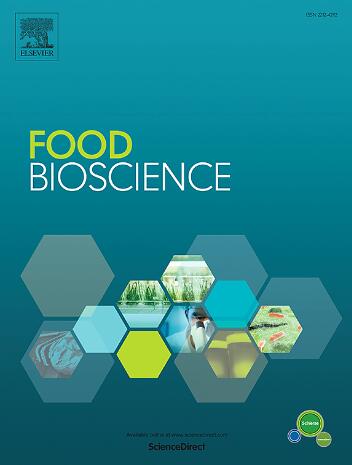Metabolomics and flavor diversity of Viognier wines co-fermented with Saccharomyces cerevisiae from different sources of Metschnikowia pulcherrima strains
IF 4.8
1区 农林科学
Q1 FOOD SCIENCE & TECHNOLOGY
引用次数: 0
Abstract
In this paper, seven Metschnikowia pulcherrima strains were isolated from different origins and evaluated for fermentation-related enzyme activities and fermentation characteristics using simulated grape juice. The impact of these strains on Viognier wines fermentation was further evaluated by analyzing their fermentation kinetics, enological parameters and untargeted metabolomics. Results showed that WG6 and WG13 strains had relatively high β-glucosidase, esterase, pectinase and protease activities. All M. pulcherrima had a low utilization of fructose compared to S. cerevisiae and that fermentation alone produced lactic acid but not acetic acid. In Viognier wines, the co-fermentation of all M. pulcherrima with S. cerevisiae resulted in higher concentrations of volatiles but lower concentrations of volatile fatty acids. In particular, WG13 strain enhanced to the maximum concentration of volatiles, including the elevation of higher alcohols, acids and esters, while WG6 strain not only enhanced the aroma by elevating the concentration of acetic acid esters and fatty acid esters, but also the taste. Metabolomics revealed that WG6 strain significantly increased the content of L-phenylalanine, fatty acids and dipeptides in co-fermented wines. Thus, co-fermented wines with WG6 strain and S. cerevisiae achieved the best sensory evaluation through a relatively balanced increase in beneficial volatile and non-volatile substances. This research provides a theoretical basis for the synergistic effect of aroma and taste.

求助全文
约1分钟内获得全文
求助全文
来源期刊

Food Bioscience
Biochemistry, Genetics and Molecular Biology-Biochemistry
CiteScore
6.40
自引率
5.80%
发文量
671
审稿时长
27 days
期刊介绍:
Food Bioscience is a peer-reviewed journal that aims to provide a forum for recent developments in the field of bio-related food research. The journal focuses on both fundamental and applied research worldwide, with special attention to ethnic and cultural aspects of food bioresearch.
 求助内容:
求助内容: 应助结果提醒方式:
应助结果提醒方式:


